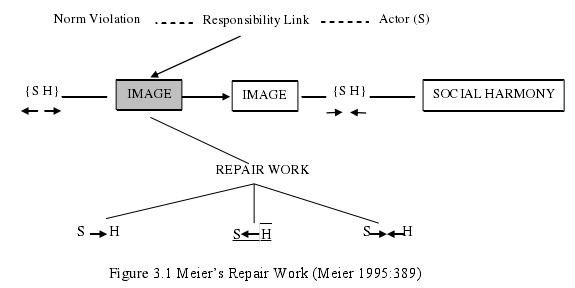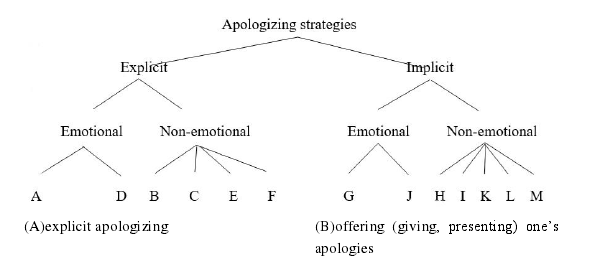本文是一篇英语毕业论文,笔者认为影响语用策略选择的主要因素是原因的可控性、冒犯的类型和道歉的时间。对于不可控因素引起的事件,客户是宽容的,企业可以从企业的角度采取更多的策略。对于可控因素造成的问题,客户问题非常严重,企业应该从客户的角度来选择策略。客户更关心实质性伤害引起的道歉。企业需要从客户的角度出发,用各种策略安抚他们。当企业能够预测违规行为时,就会在麻烦发生之前道歉,否则他们就更难弥补麻烦。
Chapter One Introduction
1.1 Background of the Research
The media for exchanging the information is changing all the time. In the ancient times, humans passed the messages through carrier pigeons, smoke on beacon towers and workers who rode horses for thousands of miles. Nowadays, we live in an era of information. News on the Internet bring people closer together, even those who are separated by remote distance. There is no doubt that it brings us countless benefits. However, as the proverb goes, “where fortune lies, where misfortune lies”. If enterprises violate some tacit norms, it is hard for them to seal off the news. Their faults would spread fast and even become the hot search in different software, especially Sina Weibo, which is so influential that many corporations choose it as a means of advertising. Under the influence of the Internet, a majority of netizen will know the scandals immediately. The misconducts will impair the image of corporations and cause people’s dislikes and criticism, result in corporations’ economic losses and even boycotts. To regain the reputation and protect the relationship with customers, almost each company which encounters this would issue statements to apologize. While only apologizing is not enough because inappropriate apologies are useless. Only appropriate apologies can shift clients and potential clients’ dissatisfaction and even enlarge publicity.
Early in 1990, a professor who majored in the business law and public policy at Michigan State University pointed out that the CEO or certain senior of the corporation should apologize “in those situations where no one person or group of persons can be identified as being responsible for the decision” (Art 1990:11). During these thirty years, corporations make higher demands on themselves, and the marketing team and public relation departments in corporations are growing fast. They try to behave better and apologize when their service or goods trigger customers’ dissatisfaction. Corporate apologies are not only stated by the CEO or another person, but always by the whole team addressed with the name of the corporation. Sometimes, some corporations announce apologies without having made mistakes. These apologies are produced “under coercion, social pressure, economic threat, positional threat, etc.” (Kimoga 2010:2184).
1.2 Research Questions
First, this paper aims to examine the pragmatic strategies for corporate apologies. The corporate apology is different from the individual apology either in terms of the degree of formality or impact. This means the study should be independent from the previous studies which mainly focus on the daily conversational data. Second, the study is intended to explain how those pragmatic strategies work to realize Repair Work. This theory can explain apologizing based on appropriateness which is the most important feature of corporate apologies. Third, when corporations decide to announce apologies, they must take several factors into consideration. This study attempts to find out main factors influencing corporation’s choice. To achieve these objectives and obtain new findings, the research questions are addressed as follows:
(1) What pragmatic strategies are used in making corporate apologies?
(2) How are these apologies realized in doing Repair Work through pragmatic strategies?
(3) What factors possibly influence the choice of pragmatic strategies for corporate apologies?

Chapter Two Literature Review
2.1 Studies on Apologies
2.1.1 Apologizing as a Speech Act
Speech act theory is a crucial theory in pragmatic study. Studies on speech acts have undergone several stages. Apologizing as a typical speech act is also studied by many scholars. As they propose different classifications of speech acts, apologizing is studied differently.
Speech act theory is put forward by Austin (1962). First, he differentiates constatives and performatives in response to grammarians’ findings that sentences and statements are not the same. Constatives are utterances containing the information which we can judge true or false. Performatives are utterances performing actions. The performatives require felicitous conditions. For instance, we are all clear that only the relevant institution or government has the power to announce that Wuhan can lift lockdown. If a student announces that Wuhan lifts lockdown, the announcement is infelicitous. Later, Austin gives up this dichotomy by the fact that the division between constatives and performatives is obscure. He tries to “go back to fundamentals and consider how many senses there may be in which to say something is to do something” (Austin 1962:108). Then, a trichotomy of the locutionary act, illocutionary act and perlocutionary act comes out. In this sense, people perform three kinds of acts when they utter meaningful linguistic expressions. Locutionary acts point to the contents of utterances which are explored by the linguists who study phonetics, phonology and so on. Illocutionary acts are meaningful expressions, conveyed with people’s purposes (Hu 2014). They are substantially what Austin drives at as the Speech Act Theory. Perlocutionary acts are the results on the audience by the utterances, influenced by the circumstances (Levinson 1983). They are prone to be studied by the scholars who are interested in psychological and social factors. Furthermore, he classifies the speech acts into five categories, verdictives, expositives, excercitives, behabitives and commissives. Verdictives concern themself with giving findings, maybe estimates or appraisals. Exercitives are words exercising the power.
2.2 Three Approaches to the Study of Corporate Apologies
Koehn (2013) categorizes apologies into 3 types according to the identity of the spokesman, the private/ interpersonal apology, the corporate/ CEO apology and the nation-state/ collective apology. This section will focus on corporate apologies and here related studies on corporate apologies are presented.
2.2.1 Crisis Communication Approach
Studies on corporate apologies are burgeoning in the field of crisis communication. Benoit (1995) claims that corporations feel the same with individuals when they face their alleged wrongdoings. Both of them require apologies to restore their image. Further, he points out the differences between individual apologies and corporate apologies. Individuals compete fiercely for the limited resources. Those who gain different distributions will arouse others’ unsatisfaction. While if one corporation makes mistakes and is not able to gain public forgiveness, other corporations will soon take the place of it. The efficiency of apologies is crucial in looming crisis. Hence, enterprises make more use of strategies than individuals. They seek for attorneys to try to minimize the danger of litigation by flexible use of pragmatic strategies (Benoit 1997). The accused corporation is considered responsible for an act which is held offensive. Accordingly, corporate apologies help corporations repair their damaged image with image repair strategies.
Benoit puts forward the theory of image restoration discourse on the basis of the key goal of communication, that is to maintain the reputation. And he presents an integrated typology of image restoration strategies, including denial, evasion of responsibility, reduction of offensiveness, correction and mortification. Denial consists of simple denial and shifting the blame, which is to blame others but not the corporation itself. Evasion of responsibility contains provocation, defeasibility, accident and good intentions. Reduction of offensiveness embraces bolstering, minimization, differentiation, transcendence, attacking accuser and compensation. Corrective actions point to making plans to prevent or solve the problem (Benoit 1977). Mortification is explained as a complex image repair strategy including “an explicit acceptance of blame, expression of regret or remorse, or a request for forgiveness” (Benoit 2014:26).

Chapter Three Theoretical Framework ............................................. 18
3.1 Appropriateness in the Successful Performance of Speech Acts ................ 18
3.2 Politeness in the Performance of Speech Acts ............................ 19
3.3 Repair Work in Social Interaction ........................ 21
Chapter Four Methodology ........................................... 26
4.1 Data Collection ............................................ 26
4.2 Research Procedure ................................................ 28
4.3 Data Description .................................... 29
Chapter Five Pragmatic Strategies in Making Corporate Apologies ................ 35
5.1 Apologizing Explicitly .......................................... 35
5.2 Offering Redress ................................................ 37
Chapter Seven Factors Influencing the Choice of Pragmatic Strategies
7.1 Controllability of the Causes
When the causes of the incidents are controllable, the enterprise should bear more responsibility. Under such occasions, it is the enterprises’ subjective intentions or negligence that cause customers’ losses. They should have been more careful to avoid troubles. Customers should not have been suffered from the losses. The enterprise should directly apologize instead of shirking responsibility, otherwise it will be considered as arrogant, indifferent and irresponsible by the customers and the public, and the event will be more and more difficult to control. When the causes are uncontrollable, customers are relatively more tolerant. They know that corporations need not take on responsibility. Towards accidents due to controllable reasons or uncontrollable reasons, their attitudes are different.
(55) 受 9 号台风“利奇马”影响,今明两天部分航班运行仍将受到较大影响,8 月 10 日截至上午 9:00,国航已取消航班 304 班,后续航班将根据天气变化情况进行动态调整。国航将通过国航官网、中国国航 APP、官方微博微信等平台通报航班调整情况。为减少特殊天气对出行的影响,请旅客随时关注天气变化,了解航班动态,合理安排您的出行,如需更改客票可通过国航官网、中国国航 APP、国航热线 95583 等渠道办理,由此给您带来的不便敬请谅解。国航将持续加强后续服务,为您的行程提供保障。(中国国际航空 2019-8-10 10:35)
(Because of Typhoon Lekima, some flights today and tomorrow are influenced. From August 10th to 9 a.m., CA has canceled 304 flights. Follow up flights will be dynamically adjusted according to the weather. Air China will report the flight information through its official website, Air China app, official account on Weibo and WeChat. In order to reduce the impact of special weather on travel, please pay attention to the weather change all the time, learn the flight information, and arrange your travel reasonably. If you need to change the ticket, you can go through Air China official website, Air China app, Air China hotline 95583 and other channels. Sorry for the inconvenience. Air China will continue to strengthen the follow-up service to provide guarantee for your journey. - Air China 2019-8-10 10:35)
Chapter Eight Conclusion
8.1 Major Findings
This study adopts mainly qualitive method to conduct a research on corporate apologies based on the data collected from Sina Weibo. First, it presents and describes the pragmatic strategies that corporations employ for corporate apologies. Then within the framework of the modified Repair Work, it examines how apologies are realized via pragmatic strategies. Last, it explores the primary factors which possibly influence the choice of pragmatic strategies.
Six types of pragmatic strategies are discovered in making corporate apologies. The illustration here follows the order of occurrences. The first one is apologizing explicitly, namely, using expressions with Illocutionary Force Indicating Device (IFID). The second strategy is offering redress, including offering repair and providing after-service. The third one is explaining, with sub-categorizations as describing external causes, admitting self-deficiency and blurring causes. The fourth one is showing attitudes, which contains thanks for attention, promising future better service and indicating longstanding efforts corporations have made. The fifth one is connecting with customers spiritually, involving requesting for forgiveness and support, expressing remorse and expressing concern for customers. The last one is acknowledging responsibility, with the two sub-categories of admitting having brought trouble and accepting criticism.
With the framework of the modified Repair Work, except for apologizing explicitly which is a common strategy, the realizations of pragmatic strategies are examined and analyzed from two perspectives, the corporation’s perspective and the customer’s perspective. From the corporation’s perspective, for more offensive accidents, the realizations of the strategies that corporations prefer as blurring causes, requesting for forgiveness and support and indicating longstanding efforts corporations have made. For less offensive accidents, the realizations of the strategies that corporations prefer as describing external causes. From the customer’s perspective, for more offensive accidents, the strategies are realized as admitting self-deficiency, expressing remorse, expressing concern for customers and acknowledging responsibility. For less offensive accidents, the strategies are realized as offering redress, thanks for attention and promising future better service.
reference(omitted)
